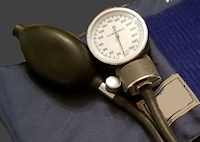|
|

|
|

|

Preparation
 Some medical
assistants are trained on the job, but many complete 1-year or 2-year
programs. Postsecondary medical assisting programs are offered in
vocational-technical high schools, postsecondary vocational schools, and
community and junior colleges. Programs usually last either 1 year and
result in a certificate or diploma, or 2 years and result in an associate
degree. Courses cover anatomy, physiology, and medical terminology, as well
as typing, transcription, recordkeeping, accounting, and insurance
processing. Students learn laboratory techniques, clinical and diagnostic
procedures, pharmaceutical principles, the administration of medications,
and first aid. They study office practices, patient relations, medical law,
and ethics. There are various organizations that accredit medical assisting
programs. Programs are accredited by the Accrediting
Bureau of Health Education Schools. Accredited programs
often include an internship that provides practical experience in
physicians' offices, hospitals, or other health care facilities. Some medical
assistants are trained on the job, but many complete 1-year or 2-year
programs. Postsecondary medical assisting programs are offered in
vocational-technical high schools, postsecondary vocational schools, and
community and junior colleges. Programs usually last either 1 year and
result in a certificate or diploma, or 2 years and result in an associate
degree. Courses cover anatomy, physiology, and medical terminology, as well
as typing, transcription, recordkeeping, accounting, and insurance
processing. Students learn laboratory techniques, clinical and diagnostic
procedures, pharmaceutical principles, the administration of medications,
and first aid. They study office practices, patient relations, medical law,
and ethics. There are various organizations that accredit medical assisting
programs. Programs are accredited by the Accrediting
Bureau of Health Education Schools. Accredited programs
often include an internship that provides practical experience in
physicians' offices, hospitals, or other health care facilities.
Formal training in medical assisting, while generally
preferred, is not always required. Some medical assistants are trained on
the job, although this practice is less common than in the past. Applicants
usually need a high school diploma or the equivalent. Recommended high
school courses include mathematics, health, biology, typing, bookkeeping,
computers, and office skills. Volunteer experience in the health care field
also is helpful. Medical assistants who are trained on the job usually
spend their first few months attending training sessions and working
closely with more experienced workers.
Some states allow medical assistants to perform more
advanced procedures, such as giving injections, after passing a test or
taking a course.
Employers prefer to hire experienced workers or those who
are certified. Although not required, certification indicates that a
medical assistant meets certain standards of competence. There are various
associations that award certification credentials to medical assistants,
and the certification process varies. It also is possible to become
certified in a specialty, such as podiatry, optometry, or ophthalmology.
Medical assistants deal with the public; therefore, they
must be neat and well groomed and have a
courteous, pleasant manner and they must be able to put patients at ease
and explain physicians' instructions. They must respect the confidential
nature of medical information. Clinical duties require a reasonable level
of manual dexterity and visual acuity.
Note: Some resources in this section are provided by the US
Department of Labor, Bureau of Labor
Statistics.
|
|